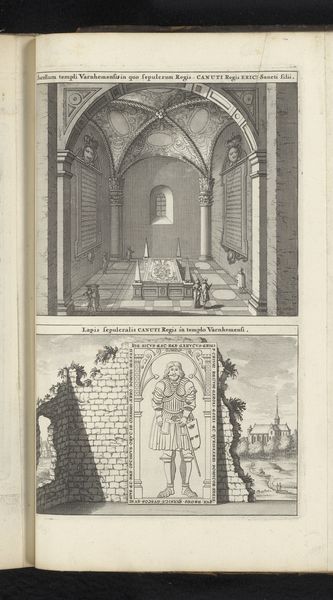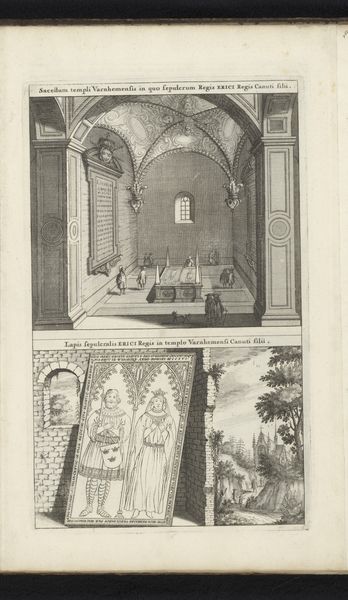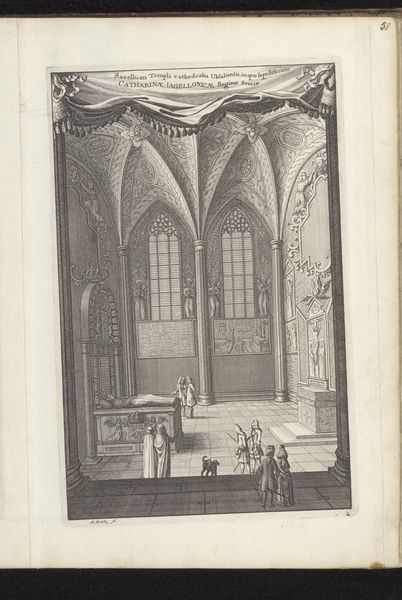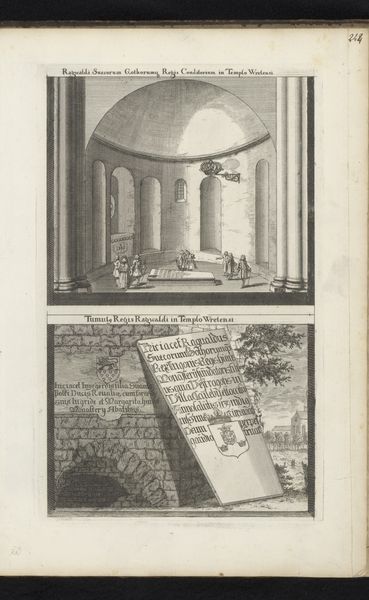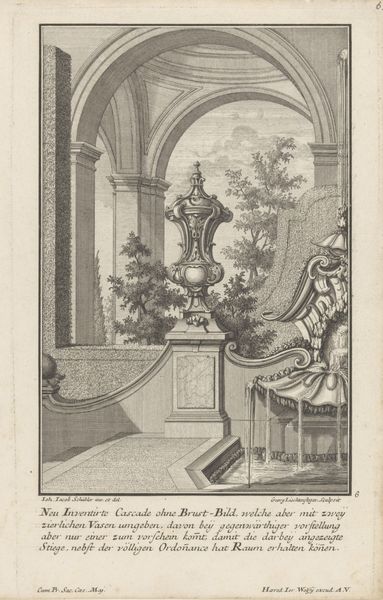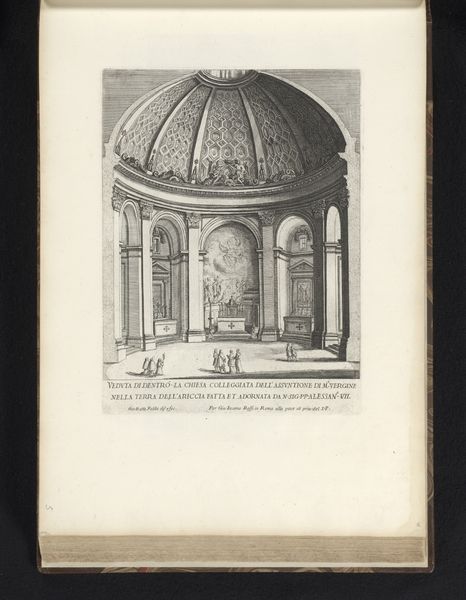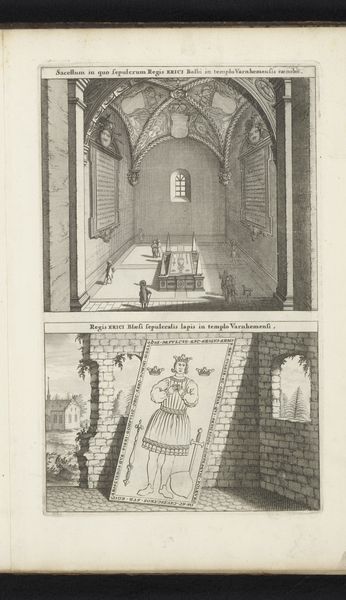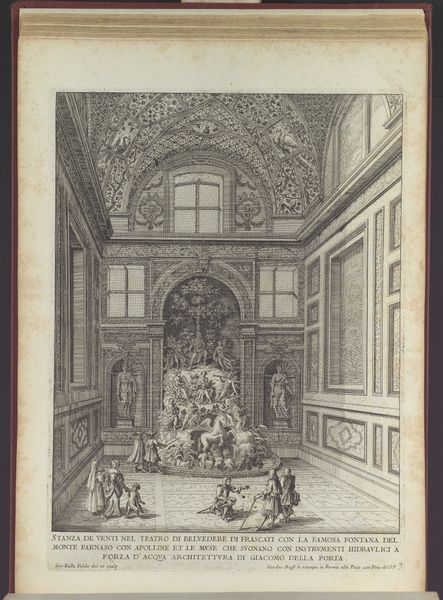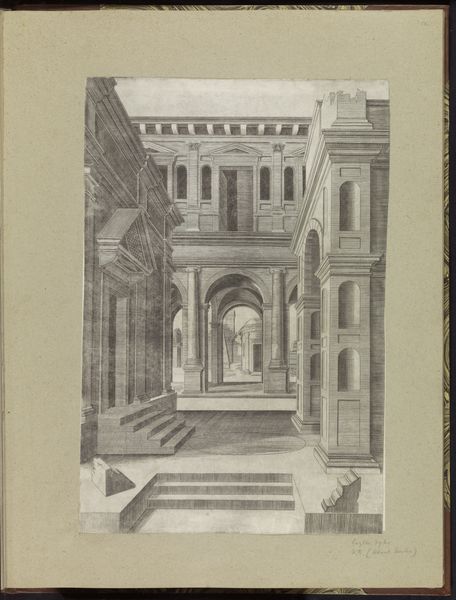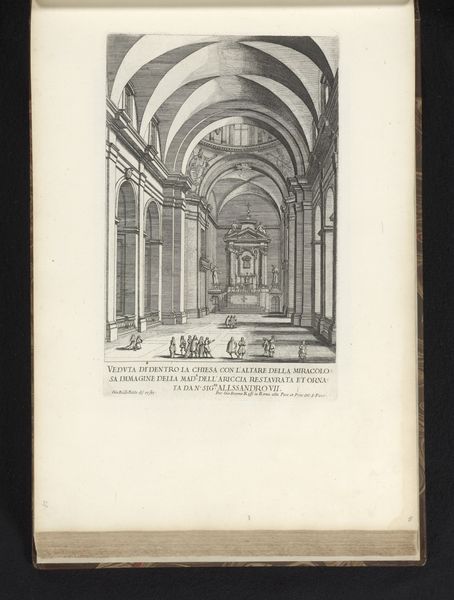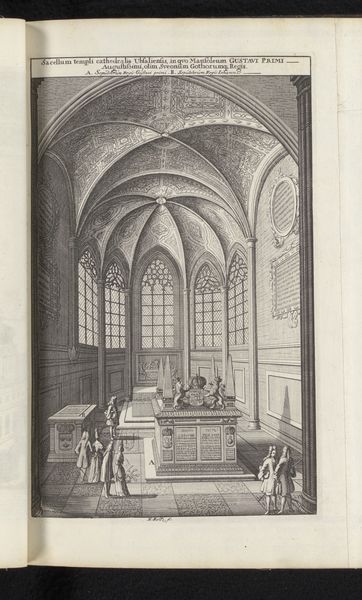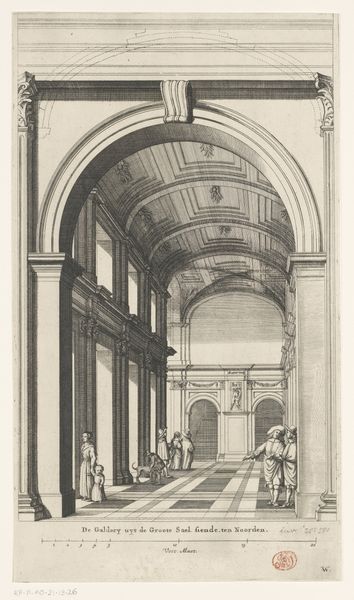
Kapel en grafsteen van Inge I van Zweden in de kloosterkerk van Varnhem 1692
0:00
0:00
drawing, print, paper, ink, engraving
#
portrait
#
drawing
#
baroque
# print
#
landscape
#
paper
#
ink
#
cityscape
#
history-painting
#
engraving
Dimensions: height 263 mm, width 164 mm
Copyright: Rijks Museum: Open Domain
Curator: This print, made in 1692 by Willem Swidde, is titled "Chapel and Tombstone of Inge I of Sweden in Varnhem Abbey Church." The print, made with ink on paper, resides here at the Rijksmuseum. What’s your immediate impression? Editor: A somber but meticulously rendered architectural space. The light and shadow interplay creates a sense of depth, and the graphic nature highlights structural features. There is some spatial ambiguity; notice how there appear to be two separate distinct spaces displayed on one page, almost like story panels. Curator: Indeed. The image speaks of layered history. The top panel offers a glimpse into the church's choir, where Inge I, an 11th-century Swedish king, is buried. Tombs evoke the transience of power and the church's enduring presence. Editor: Those pyramidal forms rising above the tomb create such rigid linearity, as though space is dictated by strict order. But that cartouche at the top with the skull creates visual balance through its elaborate curved ornament. The visual contrasts really draw the eye. Curator: Absolutely. In the lower register, there is an almost uncanny juxtaposition, where the tombstone emerges like a medieval icon, connecting to the outside world. I see cultural memory intersecting with historical record, particularly through its references to royal power and mortality. Editor: Note how Swidde cleverly uses that stone wall. At first it is supporting the tombstone relief, yet in an instant it transforms into the side wall for a landscape vista on the right-hand side. The linear perspective almost reads as if it were drawn with single-point perspective from Alberti's treatise "Della Pittura." This clever composition gives equal weight to both subject matters, figure and setting. Curator: It's a narrative strategy embedded in visual form. What this work emphasizes, I think, is the visual rhetoric around power—the enduring images created to shape memory. Consider, in this vein, how royalty used portraits to control the representation of their political power in similar ways to Inge’s stone image. Editor: I completely concur; it is like looking at historical memory etched through calculated visual devices! Curator: Seeing it this way helps appreciate how history takes visual form and acquires cultural significance. Editor: An analytical unlayering which offers deeper understanding, for sure!
Comments
No comments
Be the first to comment and join the conversation on the ultimate creative platform.
